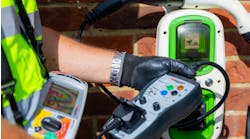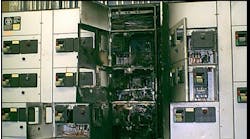It’s often been said that motors are the backbone of industry. So much of our production equipment is motor-driven that it would be hard to argue against this. It would also be difficult to dispute the fact that many of these are wired incorrectly. Three-phase motors are (arguably) the ones that most commonly suffer from wiring errors.
Some of these errors aren’t really all that bad. For example, the NEC doesn’t require that you wire any particular color to any particular terminal. But it’s customary in the United States to wire the red wire to L1, the black to L2, and the blue to L3. Of course, you might do this and then need to swap two wires to get the rotation correct (good thing the NEC doesn’t specify which color must go where!). You do use a rotation tester, of course.
Some of these errors are really bad, though at the time of installation and for some time thereafter they might seem to be. For example, connectors come in a variety of sizes. There’s a convention for the colors of these. For example, a yellow one is designed to hold two conductors sized 12 AWG to 10 AWG. It’s not designed to hold four 10 AWG conductors. Nor is it suitable for two conductors sized 18 AWG to 22 AWG; for that, you’d need a red connector.
A quick way to see if the connector will work for whatever combination of conductors you wish to splice is to line up the tips of the conductors and insert them into the barrel. If they don’t go in without one or more “sliding back” then the connector is too small. If the connector can wobble more than just a little bit over the conductor bundle, the connector is probably too large.
It’s quick, but not 100% reliable. Always check the package to see the maximum number of conductors that connector is listed for; if you got your connectors from the stockroom and there’s no package, then look it up on the manufacturer’s website. The last thing you need is for that motor connection to become a high-resistance connection that ground faults to the weatherhead because of your easily preventable mistake.
How far back do you strip the leads? If you strip the leads back to just a little longer than the inside distance of the connector barrel (notice that going into the connector you have a little distance on the insulating sleeve before getting to the metal barrel), then when you twist the connector on, you’ll see the stripped conductor will be almost entirely in the barrel.
Most experienced electricians can accurately do this by “eyeballing” it. But the connector packaging should specify exactly how much insulation to remove (e.g., 1/2 in.). In any case, you don’t want conductor insulation going into the metal barrel and you don’t want much bare conductor still left in the insulated portion.
If you’ve got bare conductor hanging out of the insulating sleeve, don’t just twist more. Note that wrapping “electrical tape” around exposed bare conductors isn’t a solution, either. Disassemble, shorten the conductor, and make the connection again (unless the connector is listed for re-use, use a new connector).
When splicing motor leads with these connectors, do you twist them together first? No. That defeats one of the purposes of the connector. Simply insert the conductors until they meet some resistance, and then start twisting the connector on to the wires while holding them tightly in your other hand.
After you splice, do you tape them up? There is some controversy over this, because in normal conditions, a properly assembled connector does not need further insulation. Depending upon the application, you may need to (for example) wrap the assembly in rubber motor lead tape so that moisture or corrosive chemicals don’t get into the open end of the connector. Don’t use “electrical tape” or phasing tape for this purpose; it’s not designed for that. There are many types of tapes (and other sealing systems) for motor leads, so make sure you choose the correct one for the application.
But don’t tape anything until you have verified the correct motor rotation.





